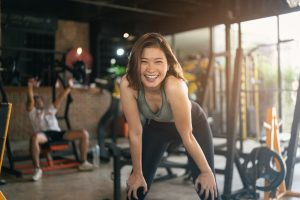How to deal with shame in the workplace

Most people will tell you shame within the workplace derives from abusive bosses and toxic co-workers. But the source quite often lies within.
Shame is such a common experience in the workplace. But despite its familiarity, many of us have never stopped to consider what shame actually is and how we should deal with it. To get the best out of ourselves, our colleagues, and our interactions at work we must shed our preconceptions of shame.
The many emotions of shame
Usually, people think of shame as a large and toxic emotion imposed by an intolerant society upon those who differ from the norm. From this perspective, shame is bad. The Bestselling works of Brené Brown and John Bradshaw have popularised this view.
In reality, shame is an entire family of emotions that vary in intensity and duration. Self-consciousness, embarrassment, chagrin, guilt, humiliation, shyness, mortification – these are all members of the shame family and they share a painful awareness of self.
Researchers who study emotional biology agree these feelings have a common physiological response pattern:
- Gaze aversion
- A wish to disappear
- A brief confusion of thought
- Blushing in the face, neck or torso
Emotions in the shame family may be mild and soon forgotten, or deep and enduring. So when and why do all of us tend to feel shame?
The Shame Paradigms
Four typical situations give rise to emotions in the shame family.
UNREQUITED LOVE – We feel that “painful awareness of self” whenever our interest in, and affection for, another person isn’t reciprocated.
EXCLUSION – We feel bad about ourselves when we’re on the outside of a group we’d like to belong to. We might be left out of a desirable team project at work, or colleagues go out for lunch without inviting us. The boss has a select group of favourites that don’t include us, and some co-workers we admire are socialising on weekends – without us.
UNWANTED EXPOSURE – We feel painfully self-conscious when something personal we’d like to keep private is unexpectedly revealed, or when we make a mistake in public. The boss singles us out for criticism at a team meeting, a performance review accurately highlights a painful weakness or shortcoming, weekly sales figures place us at the bottom of the team list, and a suggestion at a staff meeting falls on deaf ears.
DISAPPOINTED EXPECTATION – We feel chagrin when we fall short of our goals or expectations. Someone else gets that promotion we were hoping for, a report we laboured over is dismissed by management or our team’s new product roll-out fails.
Avoiding shame can be counterproductive
We may not recognise it, but emotions in the shame family play a much larger role than they should in our daily lives – in the choices we make, the things we do and don’t say, even in our decisions about what to wear.
Without realising it, we’re continually trying to anticipate and avoid shame. When criticism of our work makes us feel bad, we often react in defensive ways to ward off and protect ourselves from shame. This encourages us to make excuses for ourselves, deny responsibility, and blame others for our shortcomings.
Some of us voice self-critical remarks to forestall negative feedback from colleagues and gain control over shameful experiences (‘this is a stupid idea …’ or ‘Maybe I’m wrong, but…’). The shaming remark feels less painful and more manageable when we deliver it ourselves.
Avoiding, denying, and controlling shame are the three common strategies we use to manage this painful emotion. And all of us are doing it throughout the day at work and in our social lives.
Why we all need to understand shame in the workplace
Understanding when and why humans inevitably feel shame allows managers and supervisors to behave more sensitively. This saves an employee from needless pain and avoids an unpleasant retaliatory attack. Understanding someone’s sensitivity to shame also enables us to frame criticism in a way that can be heard, a key skill for all those who manage personnel.
Understanding the Shame Paradigms allows everyone who works alongside people to anticipate the many ways they may inadvertently shame our colleagues by leaving them out, exposing them in painful ways, or drawing attention to their shortcomings.
Sometimes we have no choice but to criticise people in the workplace. But understanding the shame our comments may arouse helps to be sensitive critics. Recalling when and why we have felt shame ourselves will help us empathise with their pain and make allowances for their defensiveness.
How to reduce shame in the workplace
- Shame is more common than we think. Self-consciousness, embarrassment, chagrin, guilt, humiliation, shyness and mortification are all members of the shame family.
- Recall times you experienced unrequited love, exclusion, unwanted exposure or disappointed expectation. Focus on times you felt them at work.
- Envision ways shame might get stirred up for your colleagues (for example, are there special teams or tight friendships? Or are shortcomings made public in a way that promotes embarrassment?).
- Identify co-workers who may avoid encounters with shame by holding back from voicing opinions. How can you help them feel less frightened?
- Before delivering criticism, imagine how you’d feel in their place. How could you soften the blow?
- If you grow defensive in the face of criticism, look for the potential truth, as painful as it might be. Accepting valid criticism will help you grow.
Dr Joseph Burgo is a psycho-therapist and psycho-analyst.












